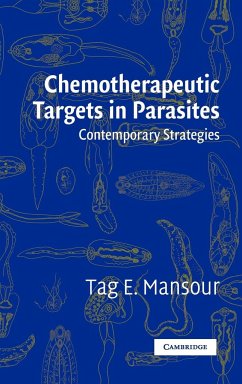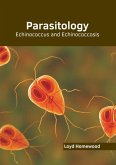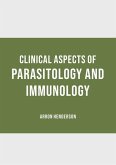Parasitic infections are the most prevalent of human diseases, and researchers continue to face the challenge of designing drugs to successfully counteract them. Chemotherapeutic Targets in Parasites analyzes the critical metabolic reactions and structural features essential for parasite survival, and advocates the latest molecular strategies with which to identify effective antiparasitic agents. An introduction to the early development of parasite chemotherapy is followed by an overview of biophysical techniques and genomic and proteomic analysis. Several chapters are devoted to specific types of chemotherapeutic agents and their targets in malaria, trypanosomes, leishmania and amitochondrial protists. Chapters on helminths include metabolic, neuromuscular, microtubular and tegumental targets. Emphasized throughout is the design of more selective and less toxic drugs than in the past. This up-to-date book will be especially relevant to medical and clinical researchers and to graduate students in parasitology, pharmacology, medicine, microbiology, and biochemistry.
Table of contents:
Preface; 1. The search for antiparasitic agents; 2. Biophysical, genomic, and proteomic analysis of drug targets; 3. Energy metabolism in parasitic helminths: targets for antiparasitic agents; 4. Antimalarial agents and their targets; 5. Antitrypanosomal and antileishmanial targets; 6. Targets in amitochondrial protists; 7. Neuromuscular structures and microtubules as targets; 8. Targets in the teguments of flatworms; Index.
Chemotherapeutic Targets in Parasites analyzes the critical metabolic reactions and structural features essential for parasite survival, and advocates the latest molecular strategies with which to identify effective antiparasitic agents. Emphasized throughout is the design of more selective and less toxic drugs than in the past.
Analyzes mechanisms of parasite survival, and advocates the latest molecular strategies with which to identify effective antiparasitic agents.
Hinweis: Dieser Artikel kann nur an eine deutsche Lieferadresse ausgeliefert werden.
Table of contents:
Preface; 1. The search for antiparasitic agents; 2. Biophysical, genomic, and proteomic analysis of drug targets; 3. Energy metabolism in parasitic helminths: targets for antiparasitic agents; 4. Antimalarial agents and their targets; 5. Antitrypanosomal and antileishmanial targets; 6. Targets in amitochondrial protists; 7. Neuromuscular structures and microtubules as targets; 8. Targets in the teguments of flatworms; Index.
Chemotherapeutic Targets in Parasites analyzes the critical metabolic reactions and structural features essential for parasite survival, and advocates the latest molecular strategies with which to identify effective antiparasitic agents. Emphasized throughout is the design of more selective and less toxic drugs than in the past.
Analyzes mechanisms of parasite survival, and advocates the latest molecular strategies with which to identify effective antiparasitic agents.
Hinweis: Dieser Artikel kann nur an eine deutsche Lieferadresse ausgeliefert werden.








